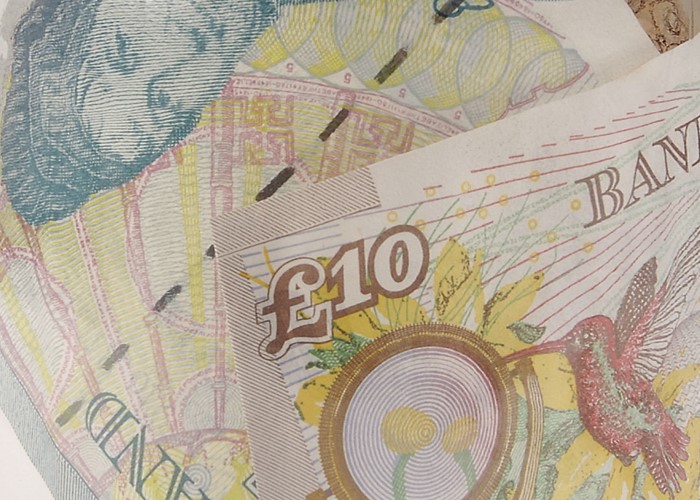Why some savings accounts make me mad

With savings interest rates at all-time lows, watch out for sneaky tricks which can turn a Best Buy savings account into a Don't Buy!
Unless you've been stranded in Antarctica for the past six months, then you'll know that the Bank of England has been busily slashing its base rate. The base rate has plummeted from 5% in early October to a record low of just 0.5% today -- and it could even fall to zero fairly soon.
With the base rate nose-diving by 90%, savings interest rates have followed suit. Indeed, according to the Bank of England, the average before-tax rate for instant-access savings accounts was just 0.17% a year at the end of February. Since then, there has been a further 0.5% base-rate cut, which suggests that many savings accounts will soon pay barely any interest at all.
Still, it is possible to get a decent instant access savings account today - as long as you know how to avoid the nasty tricks some savings providers play.
What is 'instant access'?
Watch out for savings accounts which claim to offer instant or easy access, but which come with nasty strings attached.
For the record, my definition of instant access means that you can get hold of your money that very day, without having to pay any penalties. In this category, I include accounts which come with cashcards which allow you to withdraw notes from a 'hole in the wall' or passbooks for use at your local branch. In addition, if an account allows fee free, same-day transfers to a designated account (for example, using the Faster Payments System), then I class this as instant access.
Under the heading of 'easy access', I include accounts which transfer money to and from your current account via electronic payments using the Bankers' Automated Clearing Services (BACS). As BACS transfers typically take at least three working days, this isn't instant access, but it is relatively easy access. That's why I call it easy access. (It's not rocket science, after all.)
Four traps to watch out for
1. Variable introductory bonuses
It's quite common these days for savings accounts to come with introductory bonuses attached. In most cases, these come in the form of a fixed-rate boost to the underlying rate that applies for a fixed period, usually six months to a year. For example, a fixed 2% bonus for a year does what it says on the tin: it adds an extra 2% to your return for twelve months. This is worth having at the moment, as it means there's a limit to how low the rate can go.
However, a few accounts offer introductory bonuses which are variable, rather than fixed. In other words, these bonuses can't be relied on, as they could be cut at the whim of the provider. For instance, the Egg Savings Account pays 2.85% AER, which includes a twelve-month variable bonus of 1.60% a year. As this bonus could be cut at any time, you can't rely on it. Thanks to this uncertainty, I would not recommend this account to savers.
Just this week, West Bromwich Building Society announced it was cutting its 2% annual bonus rate for savers from 2% to 0.75%. Shame on them!
2. Interest penalties for withdrawals
Some savings accounts pay a high rate of interest, but penalise you for making even a single withdrawal. For example, let's say that your savings earn 3% a year, but a withdrawal of any size in a month reduces that month's interest to zero. In other words, every withdrawal costs you a month's interest. In this case, this comes to 3%/12 months = 0.25%. So you'd earn just 2.75% that year instead of 3%.
For accounts paying monthly interest, you'd lose slightly more. This is because - thanks to lost compounding - you'd lose a little extra interest on the interest forfeited.
HSBC and first direct have been promoting savings accounts of this kind since 2007, but I have never been convinced of their merits. Given that a £1 withdrawal could cost you a twelfth of a year's interest on your entire balance, say, £10,000+, it doesn't make sense to put your money in handcuffs in this way unless you have to.
3. Interest penalties for withdrawals
Sainsbury's Finance has an account which claims to offer instant access, yet penalises you heavily for even a single withdrawal. At first glance, this account appears very attractive: the current rate is 3% a year, plus it promises to pay at least 2% above the base rate for twelve months on balances of £5,000 to £100,000.
Now, 3% a year on a balance of £5,000 places this account in the top 14 of 367 instant-access accounts, it appears to be a Best Buy. But scratch below the surface and you find the snag: if a withdrawal is made during the twelve-month bonus period, then the interest rate drops to the account's standard rate of interest, which is a feeble 0.75% AER.
In other words, one withdrawal and you lose three-quarters (75%) of the advertised rate. Thus, this isn't an instant-access account at all. Indeed, in order to earn the full advertised rate, you'd have to salt away your money for a full year and make no withdrawals during that time. Hence, I view this account as a kind of crude fixed-rate bond, rather than an instant-access savings account.
4. Other withdrawal charges or penalties
In my view, for an account to be truly instant access, it must offer penalty-free access to your cash. Hence, any accounts which charge interest penalties for dipping into your money are a no-no. Likewise, any accounts which charge per-withdrawal fees aren't likely to get into my good books. However, a modest fee is acceptable, within reason. For example, the Post Office Instant Saver account offer six free withdrawals a year, with withdrawals charged at £1 thereafter, yet offers a decent rate of 1.75% AER to new customers on £500+.
In summary, choose your instant-access or easy-access account with great care. Always look beyond the marketing messages to make sure that you won't be penalised for demanding access to your cash. Otherwise, you could have the worst of both worlds: limited access and a poor rate!
Find a superior savings account
More: The best savings accounts for big savers | My favourite savings accounts
Comments are not gone forever!
We’ve had to take article comments down temporarily as we set up our new home on lovemoney.com, but new comment tools (and your old comments) will be back soon.
Most Recent
Comments
Be the first to comment
Do you want to comment on this article? You need to be signed in for this feature








